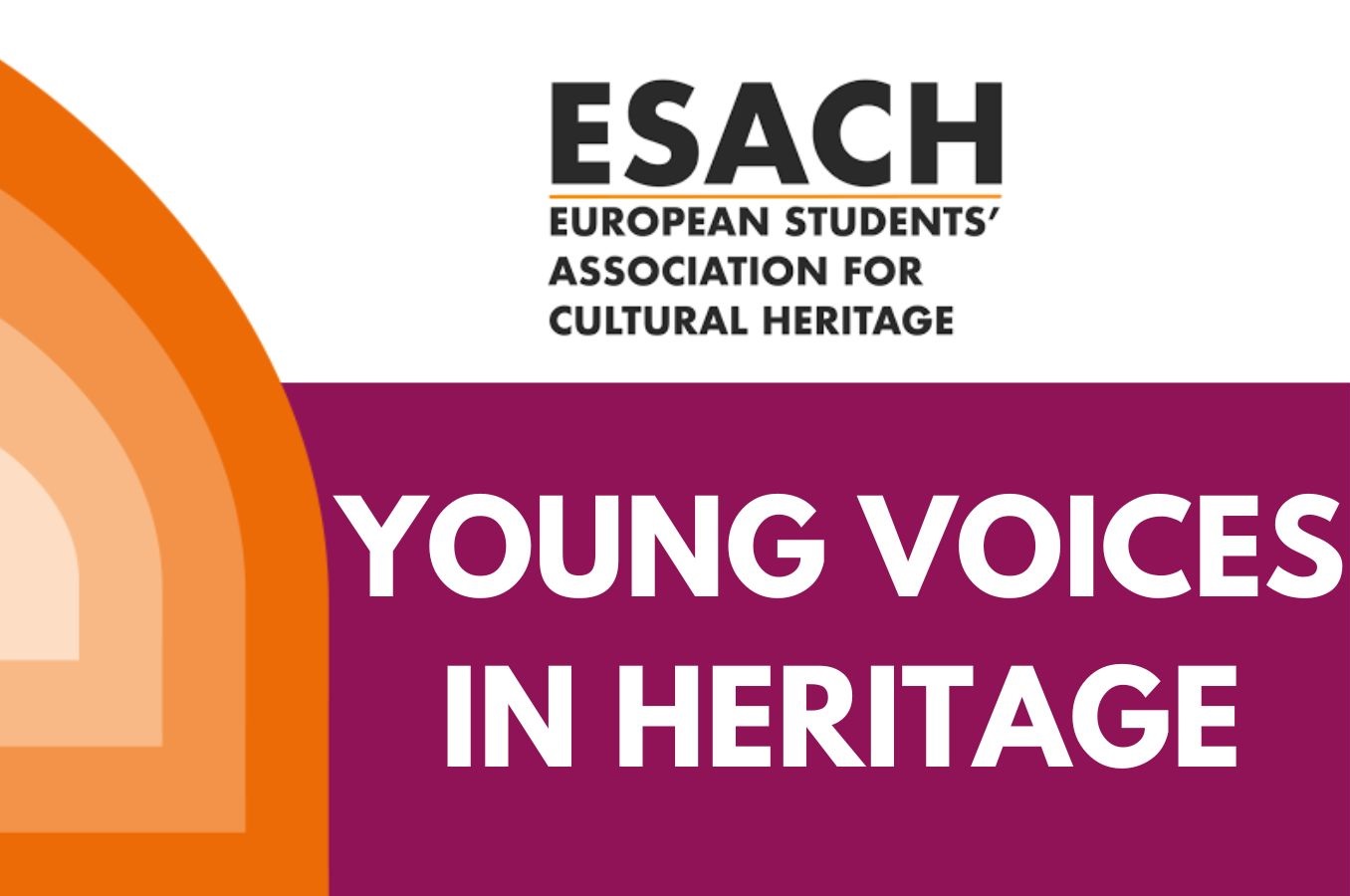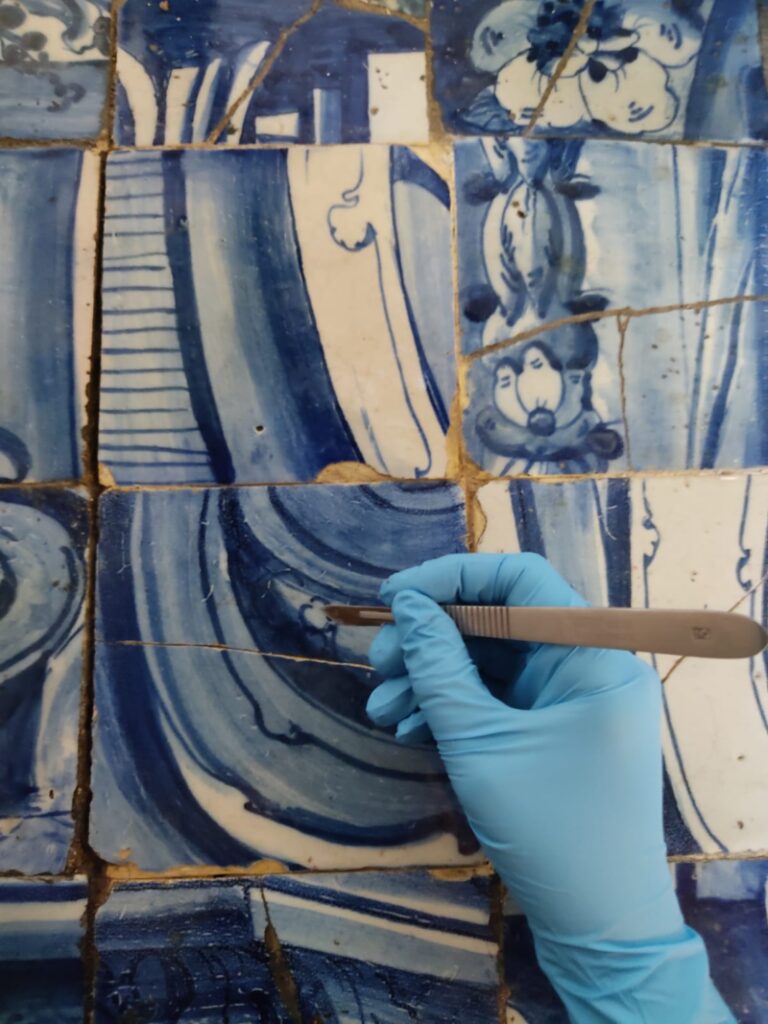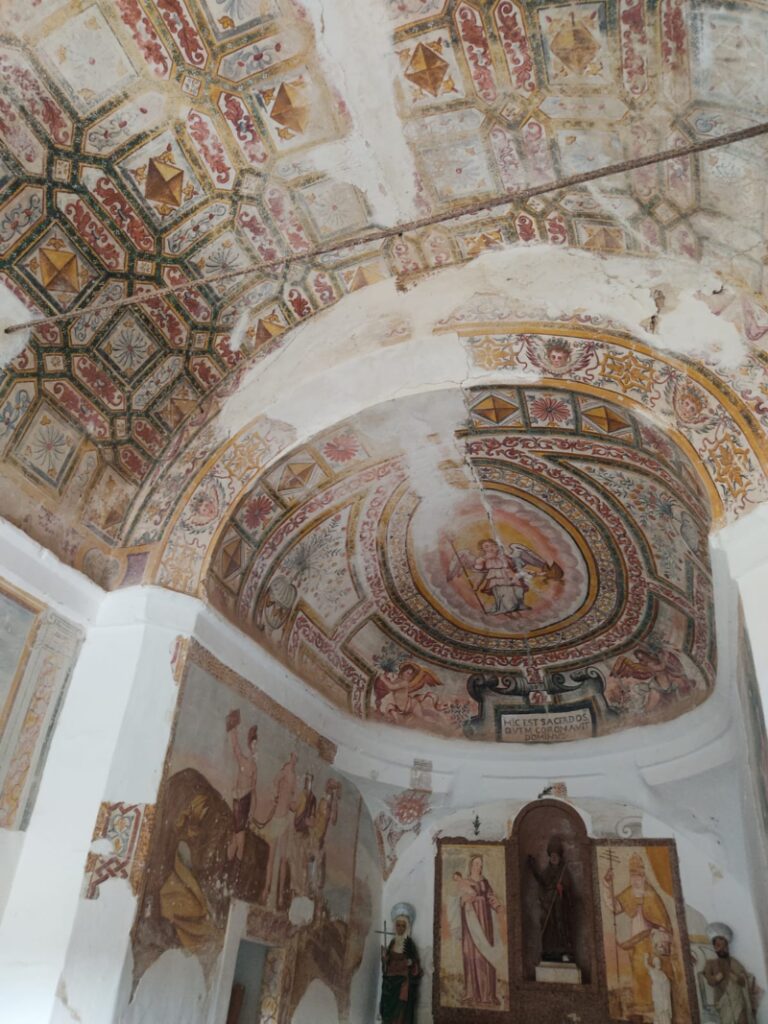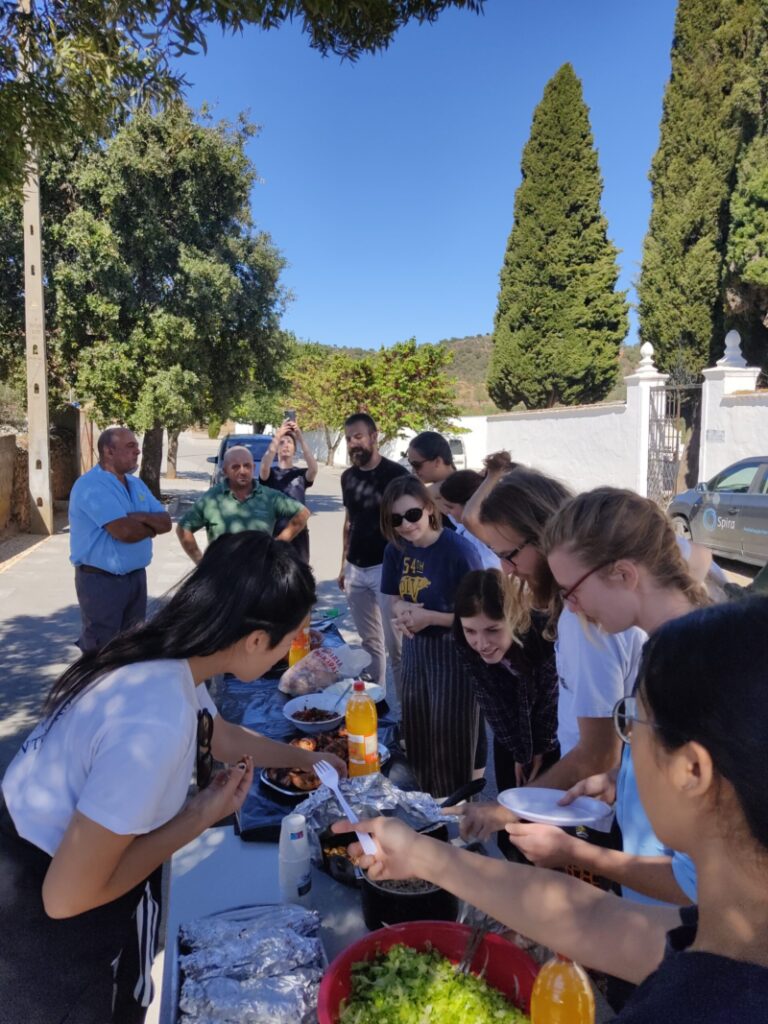
Young voices in heritage is a bimonthly column in our newsletter in collaboration with ESACH (European Students’Association for Cultural Heritage) featuring young people’s perspectives on cultural heritage.
Coming from a Latin American country, blessed with history and distinct beauties, I was not used to experiencing, on a daily basis, such a range of monuments, objects and heritage related to religion, more specifically to the Catholicism. After moving to Portugal, as a young heritage practitioner filled with curiosity and interests, I found myself surrounded by different types of heritage waiting to be explored. It is no surprise that the European history of tangible and everlasting monuments dates back to a more distant past than in my home country, Brazil, which had its very first “concrete”-erected buildings after the Portuguese colonization. In this sense, moving to a country marked by so many layers of history made me change some perspectives on heritage, the way I relate to it and, definitely, the way people relate to monuments that are engraved in their minds and landscape.
That said, I would like to start this article, in which I will share my personal experience related to religious heritage, saying that this digital space provides an excellent opportunity for young researchers and heritage professionals to express their voices, disseminate culture and, above all, create bridges between different types of heritage and that moves them all: people. My personal view on this matter relates to two different cases, both of which took place this year in Portugal but in distinct settings and circumstances. The first one concerns my current role, at a conservation and restoration company called Lainho, in the north of Portugal. My job provided me with the opportunity of working in the conservation process of the Capela de Nossa Senhora da Conceição, a relevant chapel in Guimarães which was built somewhere around the 17th and 18th century and its considered “heritage of public interest”. The second case covers a recent volunteer tourism experience that has just concluded in Portel, situated in the Alentejo region, where I had the honor to learn the conservation and restoration procedures and the necessary steps for preserving a 16th chapel filled with colorful frescos, the Ermida de São Brás, on behalf of European Heritage Volunteers.
Located in the north of Portugal, Guimarães is known as the cradle of Portugal due to its local history of victory against the Moorish forces and the origin of Portuguese nationality. The town hosts uncountable treasures and the chapel of Nossa Senhora da Conceição is one of them, being considered a symbolic heritage for the local population and authorities. My experience working in this chapel dates to May 2022, when I was surprised by the rich amount of blue Azulejos (the famous Portuguese tiles) spread all over the small monument and by the copious historical elements that remain inside of this not-so-hidden gem.

After a few days immersed in this private universe alongside my colleagues, I realized that this was not a regular chapel or church we are used to work at, where the living aspect of heritage is not as seen as it should be. And I say that because when dealing of heritage, we might confront ourselves many times with buildings which are considered obsolete and for that are left behind to be conserved, but not to be reused and readapted. This is not the case of the chapel mentioned above, which is still very active. Even during the conservation works where the mass was interrupted, I had the pleasure to meet some local people who would try to visit the chapel or walk past it while making the sign of the cross or to give us- the conservators-restorers, some treats such as fresh berries bought in the vicinity.
During one of our breaks when we used to sit outside to have lunch or snacks, an old man passed by, sat in one of the benches located in front of the chapel and started talking to me about his childhood and the present time, expressing the long relationship he had with the chapel and the neighborhood. The old man told me how the school used to take him and the other kids to excursions nearby and that they would always stop there to watch the mass before going away. In addition, he also mentioned that the former priest said years ago “if no one does anything about the chapel, it will all be ruins soon”. After that, the old man contacted a local archaeologist in order to contribute to the community’s chapel. This brief talk made me think about the power of heritage, especially when it’s linked to religion and its traditions. I can recall of some other stories such as the old lady who used to walk past the chapel everyday and greet us from the outside, always making sure to thank us for the work we were doing while letting us know about her connection to the sacred place; the Brazilian guy who asked if he could go inside and photograph the before and after in order to make an art piece afterwards and other people who would always try to sneak and check how things were going.
I made sure to write down all these encounters in my notebook so I would remember the reason behind this all. The reason behind my career choices and the motivation to keep chasing this path- the people! Sometimes, immersed in our routine, facing tangible aspects of our life, we sometimes tend to lose the connection with the human factor, but people always come to remind us about the special encounters that life provides us with. Heritage is about people, after all.

Changing the subject… a few weeks ago, back in September, I had the chance to take part in the European Heritage Volunteers training course on conservation and restoration of frescos in Alentejo. This experience was completely different than the mentioned before in this text, but it was connected by the same factor, which is the engagement and relation to the local community. For two weeks, a group of 15 emerging heritage professionals and students got together in order to learn about the necessary conservation measures when it comes to conservation and restoration of frescos.
The chapel, called Ermida de São Brás, is located right beside the village’s cemetery and a few steps away from the city center, which made our commuting throughout the place really easy and more accessible in every possible way. The local project partner, Spira, managed to organize the whole programme around the local people, in a way that all the services and facilities we would need put us directly in contact with the community. In this sense, we got to experience their daily lives, as well as to join them in some contexts, getting to learn more about the region itself. This is the case of José, the local cemetery’s gravedigger who was always there visiting the chapel, asking questions, complementing us and even bringing us some delicious Portuguese egg tarts (the famous Pastel de nata). José was very interested in what we were doing and in our contribution to the place he has lived in his whole life; his excitement made our job easier and lighter and, on the last day of work, José cooked an amazing lunch for all of us. The moment was incredible because we were getting to know someone better only because of heritage. It connected us all.

During the project we got visits from different people and also from local students, who were taken there by the schools in order to learn about frescos and their own history. The curiosity behind people’s eyes showed me that they were actually (re)inventing their own heritage through foreigners’ perspectives; young individuals who traveled from different parts of Europe got together to conserve and restore the part of Alentejo’s heritage and for the first time young and old people were shown that their heritage matters, not only for them but for the outside world.
This is another example of religious heritage and how people connect with it and end up appropriating meanings and feelings about one single things.
These are buildings, made by AND for the people- for them to use it, admire it, learn from it, relate to it and most importantly love it. New meanings of heritage can always be found when we manage to make them living parts of something bigger. Religious heritage shows us different ways of relating to our history, culture and even, to our future.
Angélica Vedana





Follow us: